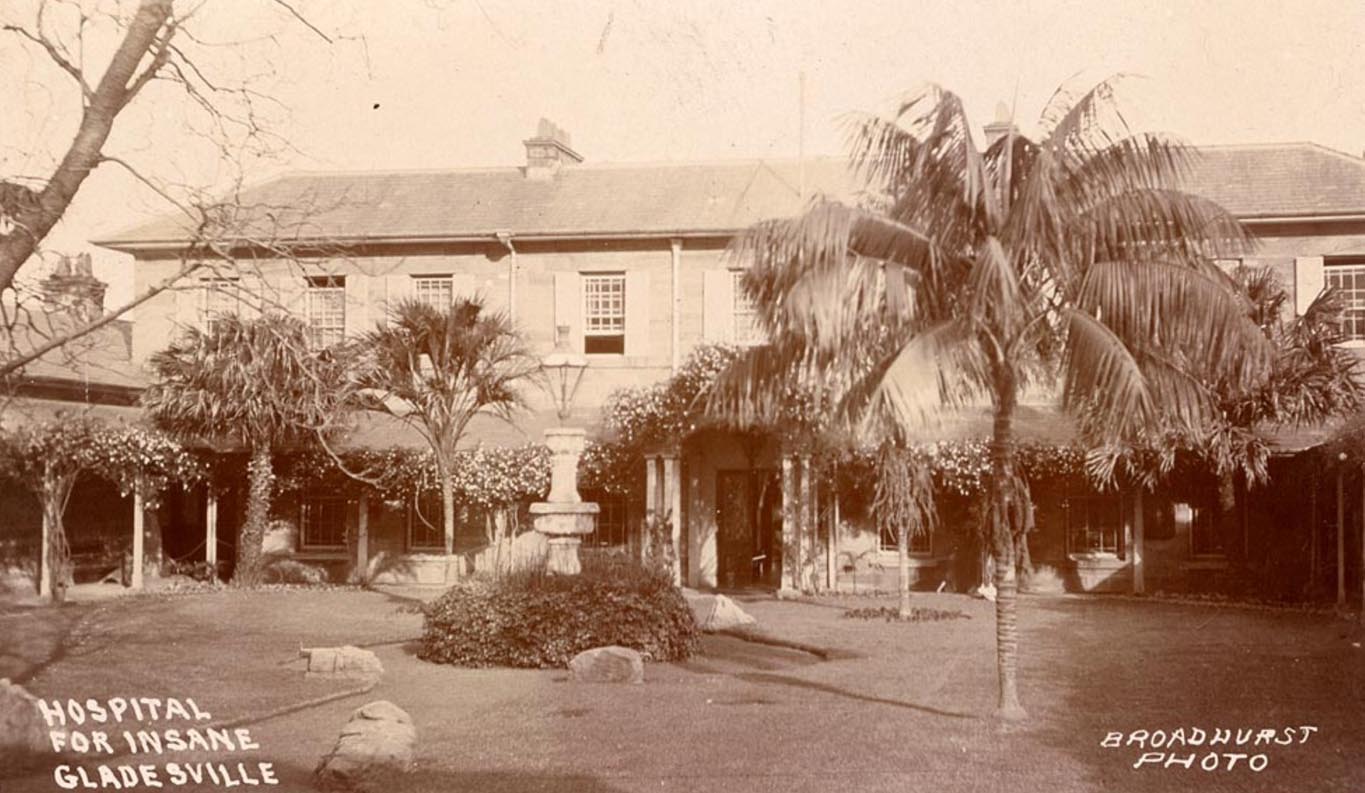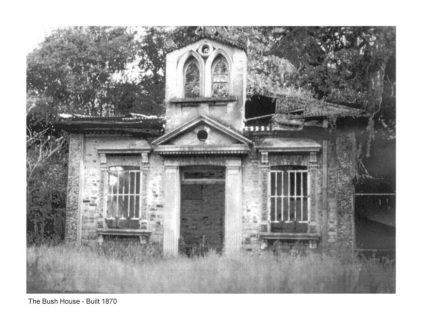Gladesville Mental Hospital
Health Education Training Institute
group Tour
To understand how far things have come,
you first need to know how things used to be...

From the very beginnings of the Colony of New South Wales, there was an endemic problem with mental health, and mental disability, as we would recognise them today.
Unfortunately, there was a tendency to lump together all people, who were referred to in the brutal vernacular of the day, as
"Invalids, Imbeciles, and Insane" .
These people were placed into institutions like Gladesville Hospital, which was the first of its kind in Australia. The prevailing view of the era was "out of sight, out of mind". In a time when there was a belief that insanity ran in families - the relatives of the mentally ill, in order to protect their own reputations, would place someone with these issues here and publicly pretend that their relative was away or abroad. Placing people in these institutions was done with the intent as much to protect the community from them, as it was to care for them. This was done with scarce resources, and even more limited understanding of their problems. Most of the early staff had no medical training at all.
Unfortunately, there was a tendency to lump together all people, who were referred to in the brutal vernacular of the day, as
"Invalids, Imbeciles, and Insane" .
These people were placed into institutions like Gladesville Hospital, which was the first of its kind in Australia. The prevailing view of the era was "out of sight, out of mind". In a time when there was a belief that insanity ran in families - the relatives of the mentally ill, in order to protect their own reputations, would place someone with these issues here and publicly pretend that their relative was away or abroad. Placing people in these institutions was done with the intent as much to protect the community from them, as it was to care for them. This was done with scarce resources, and even more limited understanding of their problems. Most of the early staff had no medical training at all.
A troubled past....
In the 1830s, a section of Liverpool court house, and a converted barn in Rouse Hill, were being used to care for people with issues ranging from depression, dementia, mental disability, to every form of mental illness imaginable. For example, the fairly common mental damage, caused by extremely strong, poorly made alcohol. They were cared for by members of the First NSW Corps, who were typically soldiers by profession, other convicts, and well meaning Quaker volunteers. However, it was noted by even Governor Macquarie, that these poor souls had utterly wretched lives, as particularly convicts tended to prey on the mentally ill within the penal system. It was decided to consolidate all of these people in a purpose built facility and have people with some knowledge and experience with "Lunatics"care for them.
This is how what was originally called the Tarban Creek Insane Asylum, first came to be built at Gladesville. It had the dual advantages of being on the Parramatta River, as well as being adjacent to the major convict route for transport to the Hunter Valley - the Great North Road. This meant it was far enough away from most of the population to be isolated, but close enough for resupply. The very first superintendent of the Asylum was a former employee of the Saint Mary of Bethlehem Mental Hospital of London - the place that came to be known by its nickname, "Bedlam". This became a becoming a byword for "scene of mad confusion". It also lends its name to the bay the hospital overlooks, on the Parramatta River.
This is how what was originally called the Tarban Creek Insane Asylum, first came to be built at Gladesville. It had the dual advantages of being on the Parramatta River, as well as being adjacent to the major convict route for transport to the Hunter Valley - the Great North Road. This meant it was far enough away from most of the population to be isolated, but close enough for resupply. The very first superintendent of the Asylum was a former employee of the Saint Mary of Bethlehem Mental Hospital of London - the place that came to be known by its nickname, "Bedlam". This became a becoming a byword for "scene of mad confusion". It also lends its name to the bay the hospital overlooks, on the Parramatta River.
The story of Gladesville Mental Hospital is
the story of mental health in Australia
From "out of sight, out of mind" and the belief that mental illness was permanent and untreatable, a succession of brave and pioneering staff brought about a revolution in the thinking, and in the treatment, of mental illness. Initial management of patients started with restraining them by chaining them to their beds at night, and building walls to stop them wandering and harming others. This progressed to the use of a garden environment and work as therapy. This led to the steady use of psychology, psychiatry and pharmacology, in the 19th and 20th centuries, up until the official closure of the hospital in 1997.
The story of Gladesville is not only one of mistakes and misery, but of learning, of bravery and of heroism, of brilliant minds and courageous staff who changed the system of mental health in Australia forever.
The story of Gladesville is not only one of mistakes and misery, but of learning, of bravery and of heroism, of brilliant minds and courageous staff who changed the system of mental health in Australia forever.
this tour is a private twilight tour group, to be run from 5.15pm to 7.00pm, Wednesday 21st August. to join the group - please click on the button below
Gladesville Hospital Heritage Tour - HETI
Modified version of the National Trust " Bonded by Blood - Separated by Shame" Tour for HETI


